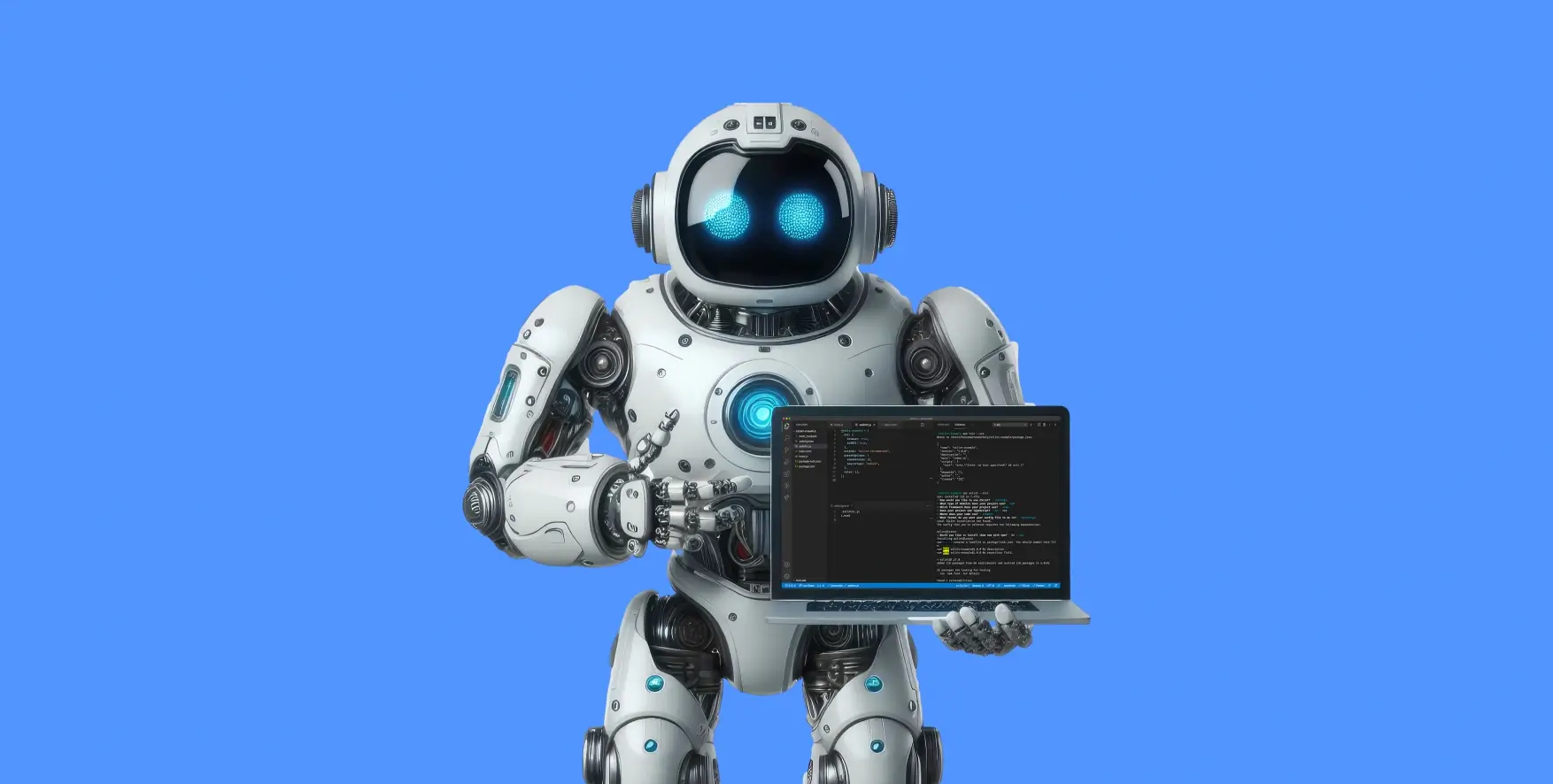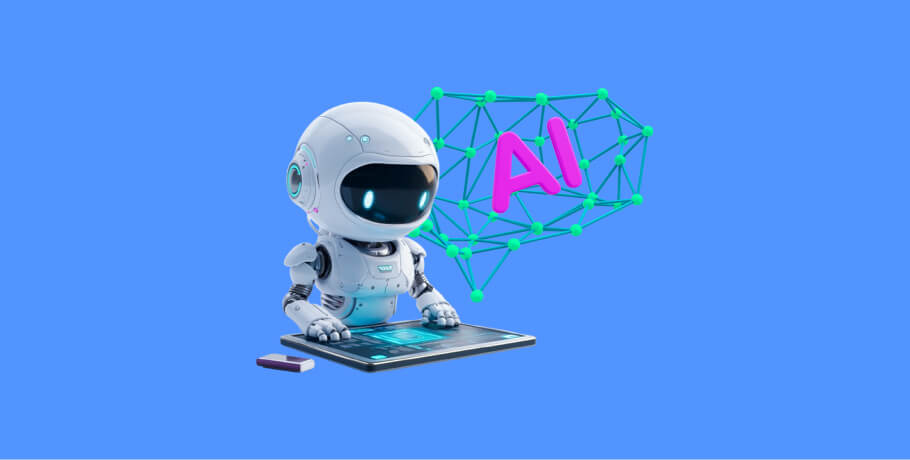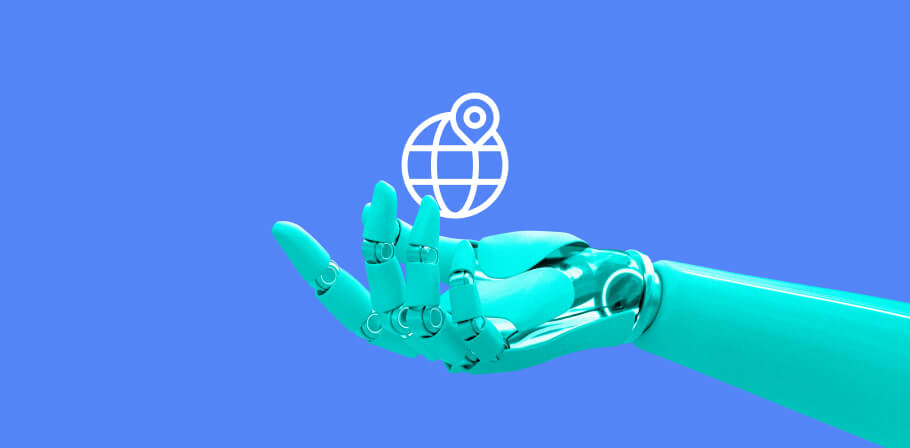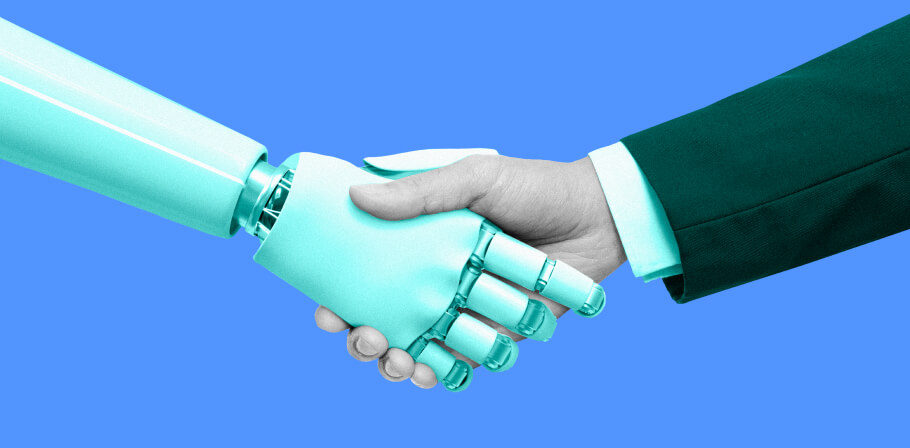Artificial intelligence (AI) has revolutionized numerous industries, and frontend development is no exception. The rise of machine learning and generative AI tools has empowered web developers to create more intuitive, responsive, and visually stunning websites. These advancements are not only enhancing user experiences but also streamlining development, letting developers focus more on creativity and less on repetitive tasks.
Imagine a world where websites build themselves, adapting to user needs in real time. This is becoming a reality as AI continues to integrate into frontend development. From automating code generation to optimizing design elements, AI-driven technologies are transforming how websites are conceived and constructed. Web developers now have access to powerful tools that augment their skills, enabling them to push the boundaries of what's possible in web design and functionality.
What is genAI in frontend development?
GenAI-assisted engineering is a transformative approach in frontend development where AI models generate, optimize, and enhance user interfaces. Leveraging frontend AI tools, developers can automate repetitive tasks such as code generation, design adjustments, and content personalization. This innovation is a game-changer, significantly reducing development time while increasing the quality and consistency of applications.
By utilizing AI, developers can focus more on creative and strategic aspects of their projects, leading to more engaging and intuitive user experiences. The integration of genAI in frontend development is crucial for businesses aiming to stay ahead in the competitive digital landscape.
This technology not only improves efficiency but also ensures that websites and applications remain cutting-edge and user-friendly. As AI continues to evolve, its impact on frontend development will likely expand, offering even more sophisticated tools and capabilities to developers.
ADOPT GENAI FOR SOFTWARE ENGINEERING IN 12 WEEKS
Enroll in our EngX GenAI Adoption Program and see your team’s productivity soar by up to 40%.
Benefits of using GenAI by frontend developers
Enhancing efficiency
Integrating AI in frontend development significantly enhances efficiency by automating numerous tasks. Tasks such as code generation, debugging, and layout adjustments, which traditionally consume a substantial amount of a developer's time, can now be handled swiftly and accurately by AI. This automation frees developers to concentrate on more strategic and creative elements of their projects.
Additionally, AI can predict and rectify potential issues before they become significant problems, further streamlining development processes. The result is a faster, more efficient workflow that not only accelerates project timelines but also improves the overall quality of the output. For businesses, this means quicker time-to-market for their digital products and services, which is crucial in a competitive environment. The use of AI-driven tools in web development is thus not just a convenience but a critical component for maintaining productivity and innovation.
Improving design consistency
Ensuring a consistent design across various platforms and screen sizes is a challenging aspect of frontend development. AI tools can analyze design guidelines and automatically apply them throughout development, maintaining uniformity in layout, color schemes, and typography. This leads to a cohesive user experience, regardless of the device or browser being used.
AI can also identify and correct inconsistencies that might have been overlooked during manual reviews. By automating these aspects, developers can ensure that their web apps have a professional and polished appearance, enhancing user satisfaction and trust.
Plus, consistent design improves usability, making it easier for users to navigate and interact with the website. This not only enhances the aesthetic appeal but also contributes to the functional efficiency of the web application, making it more intuitive and user-friendly.
Reducing cost
Integrating AI technologies in frontend development can lead to significant cost reductions. By automating tasks, such as code generation, testing, and debugging, AI minimizes the need for extensive manual labor. This efficiency saves time, allowing frontend developers to focus on more complex and creative aspects of their projects.
Additionally, the use of AI reduces the likelihood of errors, which can be costly to fix after deployment. The streamlined workflow not only accelerates project completion but also lowers overall development costs.
For businesses, this means allocating resources more effectively, reducing the need for large development teams, and shortening the time-to-market for new products. The financial benefits of incorporating AI into front-end development extend beyond the initial development phase, as ongoing maintenance and updates can also be managed more efficiently, further reducing long-term expenses.
Synthesizing data
AI refers to artificial intelligence, and it’s primarily known for the ability to process and analyze vast amounts of data quickly and accurately. That makes it invaluable for data analysis in frontend development. Machine learning algorithms can sift through user interaction data to identify patterns and insights that would be challenging to detect manually. This capability allows developers to make informed decisions about design and functionality improvements based on real user behavior.
By synthesizing data from various sources, AI can provide a comprehensive understanding of how users interact with applications, leading to more effective and targeted enhancements. This data-driven approach ensures that web apps are not only visually appealing but also highly functional and user-centric.
The ability to quickly analyze and apply data insights makes AI an essential tool for developers aiming to create optimized and engaging user experiences, ultimately leading to more successful digital products.
Remaining competitive
Incorporating AI algorithms into frontend development is crucial for staying competitive in the fast-paced world of software development. By leveraging AI, developers can rapidly adapt to the latest trends and technologies, ensuring that their web applications remain cutting-edge. AI-driven tools enable faster development cycles and more innovative features, allowing businesses to launch new products and updates ahead of their competitors.
Additionally, AI can predict and respond to market demands by analyzing user data and industry trends, providing valuable insights that guide strategic decisions. This proactive approach helps businesses not only keep up with the competition but also set new benchmarks for innovation and user experience.
Embracing AI in frontend development ensures that companies can continuously offer high-quality, advanced solutions that meet and exceed user expectations, securing their position as leaders in the digital marketplace.
Enhancing user experience
One of the significant benefits of AI in frontend development is its ability to enhance user experience through personalized content delivery. By analyzing user behavior and preferences, AI can tailor content and interface elements to meet individual needs. This personalization makes websites more engaging and intuitive, leading to higher user satisfaction and retention rates.
AI can dynamically adjust layouts, recommend relevant products, and even customize navigation paths, creating a seamless and enjoyable user journey. These tailored experiences are possible because AI can automate tasks such as updating content and adjusting design elements based on real-time data. This not only improves the overall aesthetic and functionality of web apps but also ensures that users feel valued and understood. As a result, businesses can build stronger relationships with their audience using AI technology, fostering loyalty and encouraging repeat visits.
How is GenAI changing the frontend development process?
Generative AI software development is revolutionizing web development by introducing advanced automation and intelligence to the creation of user interfaces. AI models can generate code snippets, design layouts, and even create entire web pages based on minimal input from frontend developers. This capability significantly reduces the time and effort required to develop complex interfaces, allowing developers to focus more on creativity and user experience.
Additionally, AI can bridge the gap between frontend and backend development by ensuring seamless integration and compatibility of components. The use of generative AI also enhances the accuracy and consistency of web applications, as AI algorithms can detect and correct errors in real time.
This transformative approach not only streamlines development but also enables the creation of more sophisticated and dynamic web pages, pushing the boundaries of what is possible in the digital landscape.
Examples of using GenAI in the frontend development process
Design and layout automation
Incorporating AI tools into design and layout automation streamlines the web development process significantly. These tools can automatically generate responsive layouts, ensuring compatibility across various devices and screen sizes.
By analyzing user data and design trends, AI can create aesthetically pleasing and functional designs without extensive manual input. This not only accelerates development but also enhances the consistency and quality of the user interface. For example, AI can recommend optimal color schemes, typography, and component placements based on the project's requirements and target audience.
Such automation allows developers to focus on refining and personalizing the design rather than building it from scratch. As a result, AI-driven design tools are becoming indispensable in modern web development, providing a competitive edge by delivering high-quality, user-centric designs efficiently.
User story generation
Using deep learning and data analytics, AI can generate comprehensive user stories, transforming how developers approach project planning and implementation. By analyzing browsing history, user interactions, and behavioral patterns, AI creates detailed narratives that reflect real-world usage scenarios.
These AI-generated user stories provide valuable insights into user needs and preferences, allowing developers to build more intuitive and user-friendly applications. Real-world examples of this technology in action include AI tools that generate personas and user journeys, helping development teams visualize and anticipate user behavior.
This process not only enhances the relevance and effectiveness of the end product but also ensures that development efforts are aligned with actual user requirements. By leveraging AI for user story generation, developers can create more engaging and satisfying user experiences, ultimately leading to higher user retention and satisfaction.
Code writing
Generative AI business use cases include automated coding. These AI-powered tools can write code snippets, modules, or even entire applications based on specific requirements provided by developers. This significantly accelerates the development timeline, allowing teams to deliver projects faster and with higher precision.
For novice developers, AI can serve as a powerful learning tool, providing real-time suggestions and corrections that enhance coding skills and understanding. By automating repetitive and mundane coding tasks, AI allows developers to focus on more complex problem-solving and creative aspects of development.
This not only boosts productivity but also ensures a higher quality of code, as AI can adhere to best practices and industry standards consistently. The integration of generative AI in code writing is thus a game-changer, making software development more efficient and accessible.
Automated testing and code reviews
Integrating AI into the testing phase brings a new level of efficiency and accuracy. AI applications can perform extensive testing cycles, identifying potential bugs and vulnerabilities that human testers might overlook. This ensures that the code is robust and reliable before deployment.
Additionally, AI-powered tools can conduct code reviews, analyzing the codebase for adherence to coding standards, detecting inconsistencies, and suggesting improvements. This not only speeds up the review process but also enhances the overall quality of the code.
For development teams, this means fewer post-deployment issues and faster turnaround times for updates and fixes. Automated testing and code reviews allow developers to maintain high standards of quality while freeing up time to focus on more strategic and innovative tasks. The implementation of AI in these areas is a crucial step toward more reliable and efficient software development practices.
Content personalization
Content personalization powered by AI transforms user experiences by delivering tailored content to each visitor. By analyzing user behavior, preferences, and interaction history, AI can dynamically adjust website content to match individual needs and interests.
For instance, AI can recommend a blog post or product based on past activity, enhancing engagement and satisfaction. Adding an AI chatbot that uses natural language processing can further support customization, allowing users to gather information with ease and creating more data points for further content tailoring. This personalized approach ensures that users find relevant and valuable content, which can increase time spent on the site and improve conversion rates.
For developers, understanding how to use AI in frontend development for content personalization means leveraging AI tools to automate and optimize these adjustments in real-time. By integrating AI-driven content personalization, websites can offer a more engaging and intuitive user experience, setting them apart in a competitive digital landscape and fostering stronger connections with their audience.
Predictive maintenance
Incorporating AI into predictive maintenance offers exciting possibilities for enhancing the reliability and performance of web applications. AI can monitor and analyze vast amounts of data to predict potential issues before they become significant problems.
By leveraging bug detection algorithms and historical data, AI can identify patterns that indicate future malfunctions or performance bottlenecks. This proactive approach allows developers to address issues promptly, minimizing downtime and maintaining a seamless user experience.
For frontend code, predictive maintenance ensures that any potential disruptions are identified and resolved quickly, keeping the application running smoothly. This not only enhances the overall quality and reliability of websites but also frees up developers to focus on new features and improvements. Predictive maintenance powered by AI is a powerful tool that helps maintain high standards of performance and user satisfaction in modern web development.
MAXIMIZE YOUR ROI WITH GENAI ADOPTION
Explore how genAI can deliver significant returns on investment by enhancing productivity, reducing costs, and improving software quality.
Will AI replace frontend developers?
The question of whether AI will replace frontend developers often arises as AI models become more advanced. While AI can automate many tasks and enhance efficiency, it is unlikely to completely replace human developers. Instead, AI serves as a tool that augments the capabilities of developers.
Human intelligence remains crucial for creative problem-solving, user experience design, and understanding nuanced project requirements. AI excels at handling repetitive tasks and analyzing large datasets, but it lacks the ability to truly understand context and empathy, which are essential in creating intuitive and engaging user interfaces. Therefore, the future of frontend development lies in a collaborative approach where AI and human developers work together.
AI can handle the heavy lifting, allowing developers to focus on innovation and the finer details that require a human touch. This synergy will lead to more sophisticated and user-centric applications.
Adopt genAI in your software testing with our EngX Program
Enhance your software engineering team's efficiency by up to 42% with EPAM's EngX GenAI Adoption Program. Our toolkit features over ten new AI tools to boost productivity for businesses of all sizes.
Utilizing AI technology and machine learning, our program simplifies complex projects, from integrating open-source code to automating repetitive tasks. This allows frontend developers to focus on innovation.
Partner with EPAM and use our step-by-step guide tailored to your business needs. Explore real-world examples and transform your web development with generative AI. Start your AI-assisted journey with EPAM’s EngX Program today.
Conclusion
Ultimately, integrating AI tools in frontend development offers numerous benefits that enhance both efficiency and creativity. AI can perform tasks that range from automating boring tasks to providing insights that refine design skills, thereby enabling developers to focus on more strategic aspects of making websites.
As AI improves, it complements the role of the frontend developer, rather than replacing it, by taking over repetitive tasks and enhancing decision-making processes. This collaboration between human intelligence and AI in frontend development leads to more intuitive and user-friendly applications.
With the digital landscape continuously evolving, the high demand for skilled developers who can leverage AI effectively is set to grow. By embracing these technologies, developers can ensure they remain ahead in the industry, delivering superior results and driving innovation in web development.
FAQ

Expert digital communicator and editor providing insights and research-based guides for technology buyers globally.
Expert digital communicator and editor providing insights and research-based guides for technology buyers globally.
Explore our Editorial Policy to learn more about our standards for content creation.
read more














